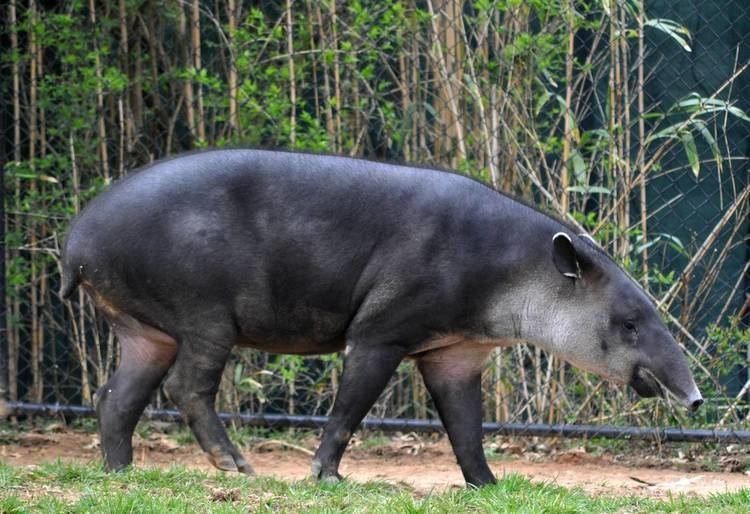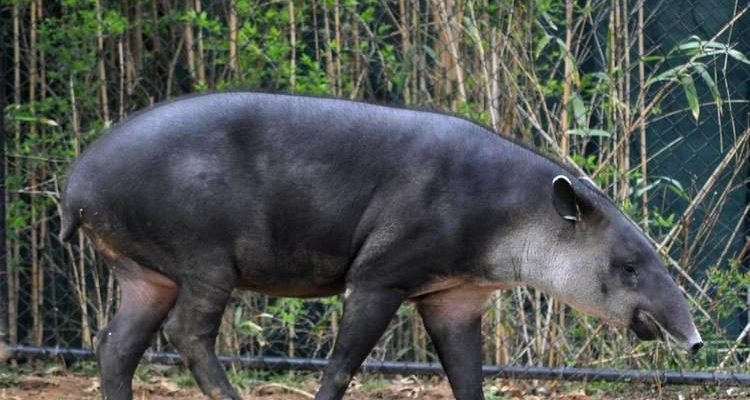
So, what makes Baird’s tapir stand out in the great tapestry of life? Found in Central America, this tapir serves as a great representative of a lineage that dates back over 50 million years. To truly appreciate Baird’s tapir and its place in the animal kingdom, we need to dive deep into its evolutionary history and discover how it has evolved to thrive in its unique habitat. Let’s embark on this journey together, where we’ll explore not only the history of the Baird’s tapir but also how it reflects the greater narrative of life on Earth.
Understanding the Tapir Family
To appreciate Baird’s tapir, it helps to know a bit about the tapir family itself. Tapirs belong to the family Tapiridae, which has a lineage that stretches back to the Eocene epoch—about 56 to 34 million years ago. Here’s the thing: They’re more closely related to horses and rhinoceroses than they are to pigs, even though they might seem similar. This connection may surprise you, but it highlights the fantastic diversity within the animal kingdom.
Baird’s tapir is one of the four existing tapir species, alongside the Brazilian tapir, the Malayan tapir, and the mountain tapir. Each species has adapted to different environments, but all tapirs share common characteristics, like their stout bodies, short legs, and flexible snouts, which they use like a snorkel while foraging in water. It’s truly amazing to think about how these creatures, each shaped by their environments, hold secrets of their ancestry in every aspect of their being.
The tapir family tree has faced some challenges over the years, surviving various extinction events that wiped out many other species. Adaptability has been key to their survival. Baird’s tapir, for instance, is well-suited to the rainforests and wetlands of Central America, with its ability to swim and navigate through dense foliage. The fact that it has persisted in these challenging environments speaks volumes about its evolutionary success.
The Ancestry of Tapirs
Now, let’s travel back in time. The ancestors of tapirs were small, deer-like creatures that roamed ancient landscapes. They made their debut around 50 million years ago and evolved through various changes across continents. Fossil evidence suggests that tapirs once thrived in North America. Picture a whole range of these ancient tapirs wandering through lush forests. Over time, some species ventured into South America, where they adapted to new ecosystems.
The earliest known ancestor of modern tapirs is called *Hyracotherium*, which lived around 50 million years ago. As Earth’s climates changed, these creatures had to adapt to survive. Some members of the tapir family explored new territories while others remained in stable environments, leading to the diversification we see today.
Interestingly, it’s the isolation of species that often drives evolutionary change. While some tapirs moved south, others died out or adapted to their surroundings, leading to the lineage that eventually became Baird’s tapir. This kind of isolation is a common thread in evolution, shaping the unique characteristics of each species over time.
Baird’s Tapir: The Modern Survivor
Baird’s tapir, known scientifically as *Tapirus bairdii*, is the largest land mammal in Central America and is definitely a sight to behold. With its distinctively rounded body, short legs, and large, flexible snout, it’s a creature perfectly designed for its rainforest habitat. But what sets Baird’s tapir apart from its relatives?
Primarily, it’s their habitat and behavior. Baird’s tapirs prefer dense forests and wetlands, where they can navigate through underbrush and forage for food like leaves, fruits, and aquatic plants. They’re also excellent swimmers, using their long snouts to breathe while submerged. Honestly, it’s pretty incredible how they’ve adapted to their environments—dashing through the water like an oversized otter!
Unfortunately, despite their adaptations, Baird’s tapir is classified as endangered. Habitat loss due to agriculture, logging, and urban development poses a significant threat. Conservation efforts are crucial to ensure that these remarkable creatures continue to roam their native landscapes for generations to come.
Behavior and Social Structure
Like other tapirs, Baird’s tapir is mostly solitary. They enjoy a peaceful existence, often foraging alone during twilight hours. Their social behavior is quite interesting; they communicate through a variety of vocalizations that range from whistles to grunts. It’s like they have their own secret language!
When it comes to reproduction, female tapirs give birth to a single calf after a gestation period of roughly 13 months. The calves, with their distinctive striped and spotted coats, provide excellent camouflage in the dappled light of the forest. It’s a fascinating evolutionary strategy, ensuring the young are hidden from predators until they gain enough strength to survive on their own.
Interestingly, despite their solitary nature, Baird’s tapirs have shown social behaviors in areas where populations are denser. This flexibility suggests that they can adapt their behavior based on environmental factors, which is another testament to their evolutionary resilience.
The Role of Baird’s Tapir in the Ecosystem
Baird’s tapir plays a crucial role in its ecosystem, acting as a keystone species. These gentle giants help maintain the health of the rainforest by aiding in seed dispersal. When they munch on fruits, they ingest seeds and later excrete them in different locations, helping to propagate various plant species. You might say they’re the forest’s gardeners!
The tapir’s foraging behavior also influences the structure of the forest. By feeding on young saplings and undergrowth, they help keep the vegetation balanced, ensuring that no single species dominates. In a way, Baird’s tapir helps to foster biodiversity, which is fundamental for healthy ecosystems.
However, their declining numbers mean these vital roles are at risk. Protecting their habitat is essential not just for Baird’s tapir but for many other species that rely on the same ecosystems. By conserving these areas, we can help maintain the delicate balance of life in the rainforest.
The Future of Baird’s Tapir
With increasing threats to their habitats, the future of Baird’s tapir hangs in the balance. Conservation efforts are underway, focusing on habitat protection, legal protections, and education to raise awareness about the challenges they face. It’s a daunting task, but meaningful strides are being made to ensure this unique species has a fighting chance.
Public engagement is also vital. Organizations are working to involve local communities in conservation efforts, helping them understand the importance of preserving Baird’s tapir habitats. The more people appreciate these creatures and their role in the ecosystem, the better chance they have at survival.
It’s important to remember that every small effort counts. Whether it’s supporting conservation organizations or simply learning more about these incredible animals, we all play a part in safeguarding the future of Baird’s tapir. After all, preserving biodiversity enriches our world and ensures we have a richer, more varied planet in years to come.
In summary, understanding the evolutionary history of Baird’s tapir not only sheds light on how this remarkable creature has survived through the ages but also underscores the importance of conservation to protect it and its habitat. With the right focus and effort, we can ensure that this living relic of our planet continues to thrive for future generations.

